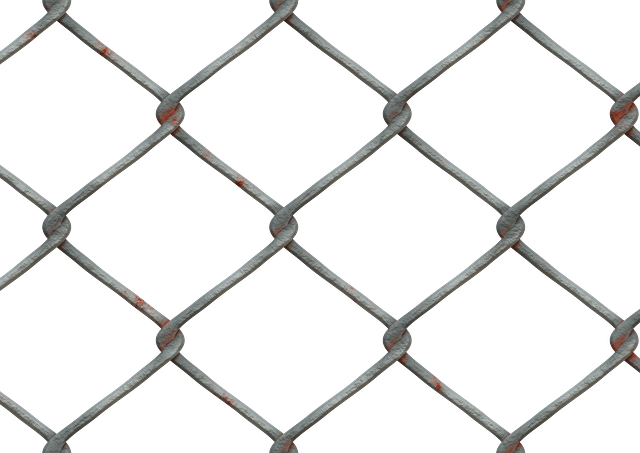In New Bedford, Massachusetts, enhancing your outdoor space with a DIY fence installation can transform your yard into a secure, stylish oasis. This comprehensive guide equips homeowners with the knowledge to navigate the process effectively. From selecting suitable fence options tailored to New Bedford’s unique landscape to mastering each installation step for a durable, attractive result, you’ll discover expert tips ensuring a successful and rewarding project. Get ready to embark on a journey towards creating your ideal backyard sanctuary.
- Understanding Your Fence Options for New Bedford Yards
- Measuring and Planning Your Fence Layout Accurately
- Preparing the Ground: A Solid Foundation for Longevity
- Choosing the Right Materials for Durability and Style
- Step-by-Step Guide to Efficient Fence Installation
- Final Touches and Maintenance Tips for Your New Fence
Understanding Your Fence Options for New Bedford Yards
When it comes to fencing your New Bedford, Massachusetts yard, there’s a world of options to consider. From traditional wood pickets to modern vinyl, each material offers unique benefits and styles that cater to different tastes and budgets. Understanding these variations is key to making an informed decision. For instance, wood fences exude a natural charm but require regular maintenance; painting or staining to protect against the elements. On the other hand, vinyl fences are low-maintenance, durable, and available in various colors and designs, making them a popular choice for homeowners seeking both functionality and aesthetics.
Measuring and Planning Your Fence Layout Accurately
When planning a DIY fence installation, accurate measuring and layout planning are crucial steps. Start by examining your property and identifying where you want the fence to be installed. Use measuring tape to take precise measurements of the perimeter or specific areas where the fence will be placed. Consider factors like existing structures, trees, or other obstructions that might affect the fence’s alignment. Create a detailed plan or sketch that includes the dimensions and layout of your desired fence. This visual representation will guide you during the installation process, ensuring a straight and uniform fence line.
By accurately mapping out your fence layout beforehand, you can avoid costly mistakes and ensure your fence aligns with local regulations. It allows for better material estimation and helps you choose the right type of fence suitable for your property’s needs.
Preparing the Ground: A Solid Foundation for Longevity
Before installing any fence, preparing the ground is a crucial step for ensuring longevity and stability. For New Bedford homeowners, this means assessing and amending the soil to create a solid foundation. The terrain in Massachusetts can vary, from rocky to muddy, so understanding your yard’s composition is key. If the soil is uneven or has large rocks, consider removing them and replacing the soil with a blend of topsoil and compost to provide a level, nutrient-rich base.
This initial preparation will go a long way towards preventing future issues like uneven post placement or settling, which could compromise the fence’s integrity over time. A flat, compacted surface ensures that your fence posts stand upright and remain in place for years to come, enhancing the overall aesthetics and security of your New Bedford property.
Choosing the Right Materials for Durability and Style
When it comes to DIY fence installation, selecting the right materials is half the battle won. For New Bedford, Massachusetts homeowners, considering factors like durability and local climate is essential. Opting for high-quality, weather-resistant wood or modern composite materials can ensure your fence stands the test of time, even through harsh winters and hot summers.
Style also plays a significant role in choosing fence materials. From traditional picket fences that add charm to contemporary vertical slat panels for a sleek look, various options cater to different tastes. Matching your desired aesthetic with materials that align with local conditions will result in a beautiful and long-lasting fence.
Step-by-Step Guide to Efficient Fence Installation
Before tackling DIY fence installation, familiarize yourself with the process. Start by assessing your property and choosing a suitable fence style and material that aligns with New Bedford’s local regulations. Next, gather essential tools including a measuring tape, post-hole digger, hammer, concrete mix, and wooden stakes. Mark out the fence line accurately using string and stakes, then dig holes for the posts, ensuring they’re deep enough to provide stability. Place the fence posts in the holes and use wooden stakes for additional support. Fill the holes with concrete, allowing it to set completely. Once set, attach the fence panels or rails according to the manufacturer’s instructions. Regularly inspect your fence for any signs of damage or weakness, making repairs promptly to maintain its integrity and security.
Final Touches and Maintenance Tips for Your New Fence
Once your fence is fully installed and all posts are secure, it’s time to focus on the final touches. Take a step back to assess the overall appearance of your new fence, ensuring all panels are level and securely fastened. Check for any loose or protruding nails or screws that may need tightening. If you’ve chosen a treated wood fence, apply a fresh coat of sealer or stain to protect it from the elements and enhance its aesthetic appeal. This simple step will ensure your fence remains in excellent condition for years to come.
Regular maintenance is key to keeping your new fence looking its best. Remove any dead leaves, branches, or debris that may accumulate on top of the fence over time. Inspect your fence regularly for signs of rot, rust, or damage and address these issues promptly. Keeping up with these simple tasks will ensure your fence remains a beautiful addition to your New Bedford property for many seasons to come.
